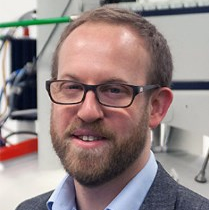Supramolecular Materials
A special issue of International Journal of Molecular Sciences (ISSN 1422-0067). This special issue belongs to the section "Materials Science".
Deadline for manuscript submissions: closed (31 October 2021) | Viewed by 31273
Special Issue Editors
Interests: polymer synthesis; supramolecular materials; biomaterials; stimuli-responsive materials; drug delivery; tissue engineering; sustainability
Special Issues, Collections and Topics in MDPI journals
Interests: supramolecular; organic electronics; self-assembly; electrochromic; SANS; rheology; gels
Special Issues, Collections and Topics in MDPI journals
Special Issue Information
Dear Colleagues,
Nature employs a combination of supramolecular interactions (e.g., electrostatic, hydrophobic, π–π, cation/anion–π, van der Waals forces, hydrogen-bonding and metal coordination) to generate hierarchically ordered structures with remarkable stimuli-responsive properties. The same structure-directing forces can, in principle, be employed for the realization of manufactured assemblies with similar or perhaps even greater utility. In this Special Issue of the International Journal of Molecular Sciences devoted to "Supramolecular Materials", we warmly invite submissions related to the synthesis, characterization and technical/biomedical applications of supramolecular entities.
You may choose our Joint Special Issue in Chemistry.
Dr. John G. Hardy
Dr. Emily R. Draper
Guest Editors
Manuscript Submission Information
Manuscripts should be submitted online at www.mdpi.com by registering and logging in to this website. Once you are registered, click here to go to the submission form. Manuscripts can be submitted until the deadline. All submissions that pass pre-check are peer-reviewed. Accepted papers will be published continuously in the journal (as soon as accepted) and will be listed together on the special issue website. Research articles, review articles as well as short communications are invited. For planned papers, a title and short abstract (about 100 words) can be sent to the Editorial Office for announcement on this website.
Submitted manuscripts should not have been published previously, nor be under consideration for publication elsewhere (except conference proceedings papers). All manuscripts are thoroughly refereed through a single-blind peer-review process. A guide for authors and other relevant information for submission of manuscripts is available on the Instructions for Authors page. International Journal of Molecular Sciences is an international peer-reviewed open access semimonthly journal published by MDPI.
Please visit the Instructions for Authors page before submitting a manuscript. There is an Article Processing Charge (APC) for publication in this open access journal. For details about the APC please see here. Submitted papers should be well formatted and use good English. Authors may use MDPI's English editing service prior to publication or during author revisions.
Keywords
- supramolecular interactions
- self-assembly
- host-guest systems
- template effects
- dynamic covalent chemistry
- supramolecular polymers
- supracolloidal chemistry
- supramolecular materials
- supramolecular optoelectronics
- supramolecular theranostics
Benefits of Publishing in a Special Issue
- Ease of navigation: Grouping papers by topic helps scholars navigate broad scope journals more efficiently.
- Greater discoverability: Special Issues support the reach and impact of scientific research. Articles in Special Issues are more discoverable and cited more frequently.
- Expansion of research network: Special Issues facilitate connections among authors, fostering scientific collaborations.
- External promotion: Articles in Special Issues are often promoted through the journal's social media, increasing their visibility.
- e-Book format: Special Issues with more than 10 articles can be published as dedicated e-books, ensuring wide and rapid dissemination.
Further information on MDPI's Special Issue policies can be found here.
Related Special Issue
- Supramolecular Materials in Chemistry (1 article)







